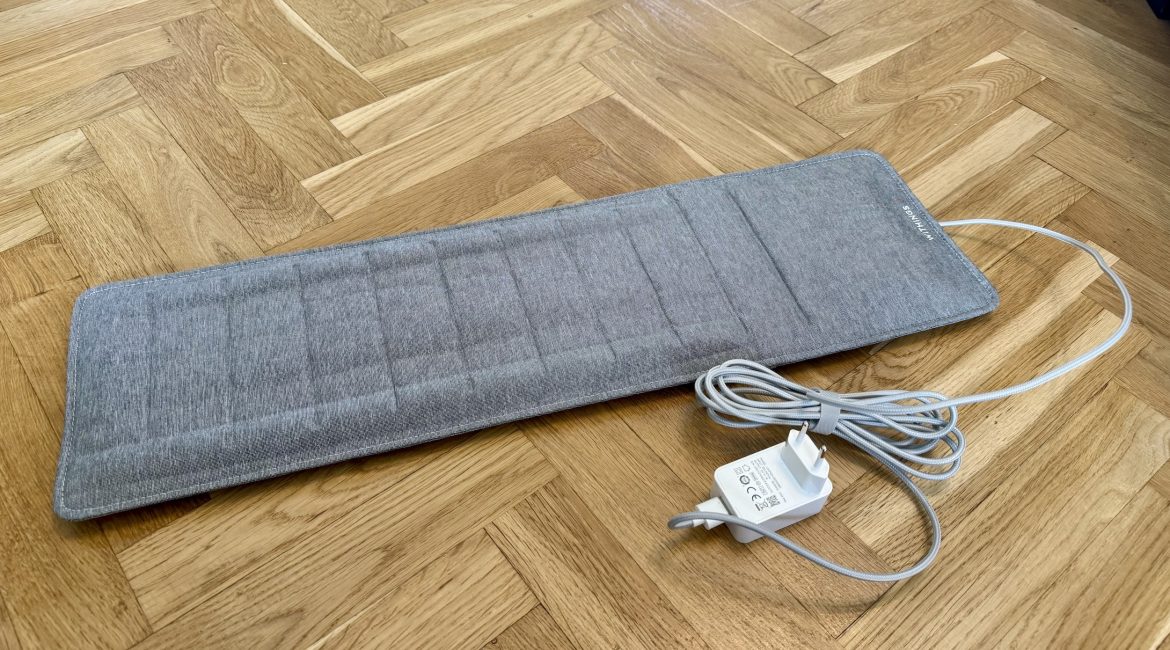TL;DR
Sweden's sleep survey shows many people struggle with sleep, but most feel good mentally. The Withings Sleep Analyzer offers an under-mattress way to track sleep quality with detailed metrics and a sleep score, integrating well with the Withings app. While its general sleep tracking seems decent and more comfortable than wearables, its sleep apnea detection is highly suspect, performing much worse than actual medical equipment. If you want to monitor your sleep patterns reliably, this device might be a good buy, but don't rely on its apnea readings. Discover if this under-mattress tracker is the right fit for your sleep health!
Recently, the Public Health Agency of Sweden released the results of a survey indicating that over half of the Swedish population reports experiencing sleep disturbances, anxiety, and worry. Encouragingly, the survey also revealed that seven out of ten individuals consider their health to be good or very good, and eight out of ten report good or very good mental well-being. The correlation between anxiety, worry, and sleep quality is well-established. Many have likely experienced nights of restless sleep, feeling more fatigued upon waking than before going to bed. However, defining “poor sleep” beyond a subjective feeling requires quantification. Measuring sleep depth, duration, and overall quality provides a means for objective analysis. This brings us to the Withings Sleep Analyzer, the subject of this review. Withings, a French company specializing in health-related devices, claims medical precision in its products – a claim supported, anecdotally, by healthcare professionals.
A Sub-Mattress Measurement Device
The Sleep Analyzer is a roughly 50cm fabric-encased device containing air cushions and an electronic measuring unit. Upon connecting to a power outlet, the device automatically inflates and calibrates. Positioned beneath your primary spring mattress (not a thinner topper), the Sleep Analyzer monitors sleep patterns by tracking metrics such as breathing and movement.
App-Based Reporting
The Withings app, previously reviewed favorably, seamlessly integrates the Sleep Analyzer data alongside metrics like step count and weight. Device setup is straightforward. The app generates a sleep score ranging from 0 to 100: scores above 75 are “green” (good), 45-74 are “yellow” (moderate), and below 45 are “red” (poor). The assessment considers factors like sleep duration (a minimum of 7 hours is required for a “green” score), sleep depth (at least 25% deep sleep for a “green” score), regularity (consistent bedtime, wake-up time, and time to fall asleep within a one-hour window to promote good sleep hygiene – avoiding weekend sleep “catch-up” is important), interruptions (frequency of waking during the night), sleep latency (falling asleep within 20 minutes is considered optimal), and wake after sleep onset (WASO) (rising within 6 minutes of waking is preferable). The device also provides an average nighttime heart rate (generally, a lower rate is considered better) and purports to measure sleep apnea (breathing pauses, addressed further below). Additionally, the Sleep Analyzer is intended to detect and record snoring. These data points can be compiled into a PDF report for sharing with healthcare providers.
Evaluating the Sleep Analyzer’s measurement accuracy definitively requires comparison against professional-grade medical equipment found in sleep clinics. For reference, we compared its data against that of the Huawei Band 8, a significantly less expensive but well-regarded sleep tracking device. While the Huawei Band 8 is an activity tracker worn on the wrist, representing a different measurement modality, it is considered a strong performer in sleep analysis.
The following results were obtained from the Withings Sleep Analyzer on a given night:
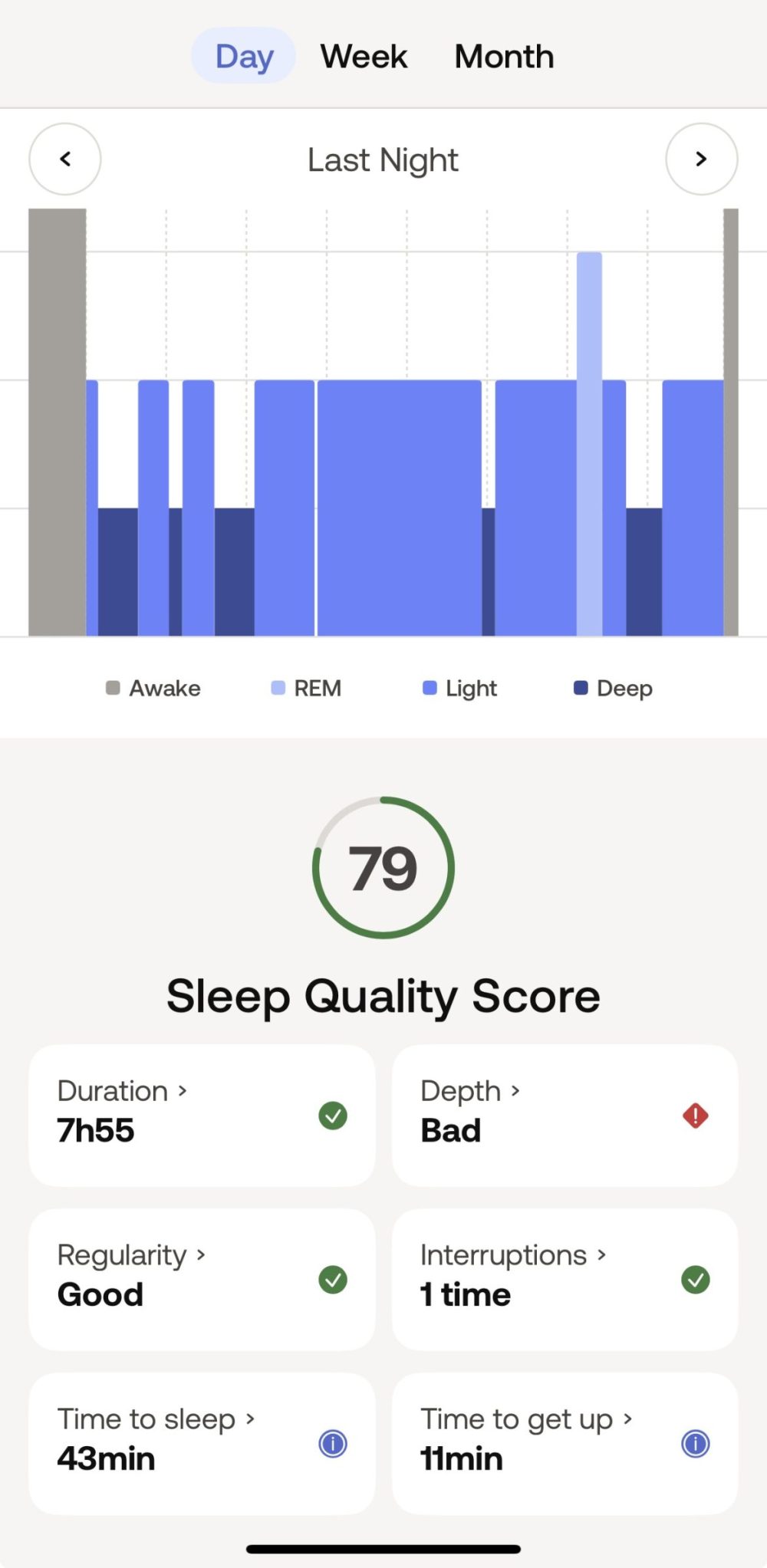
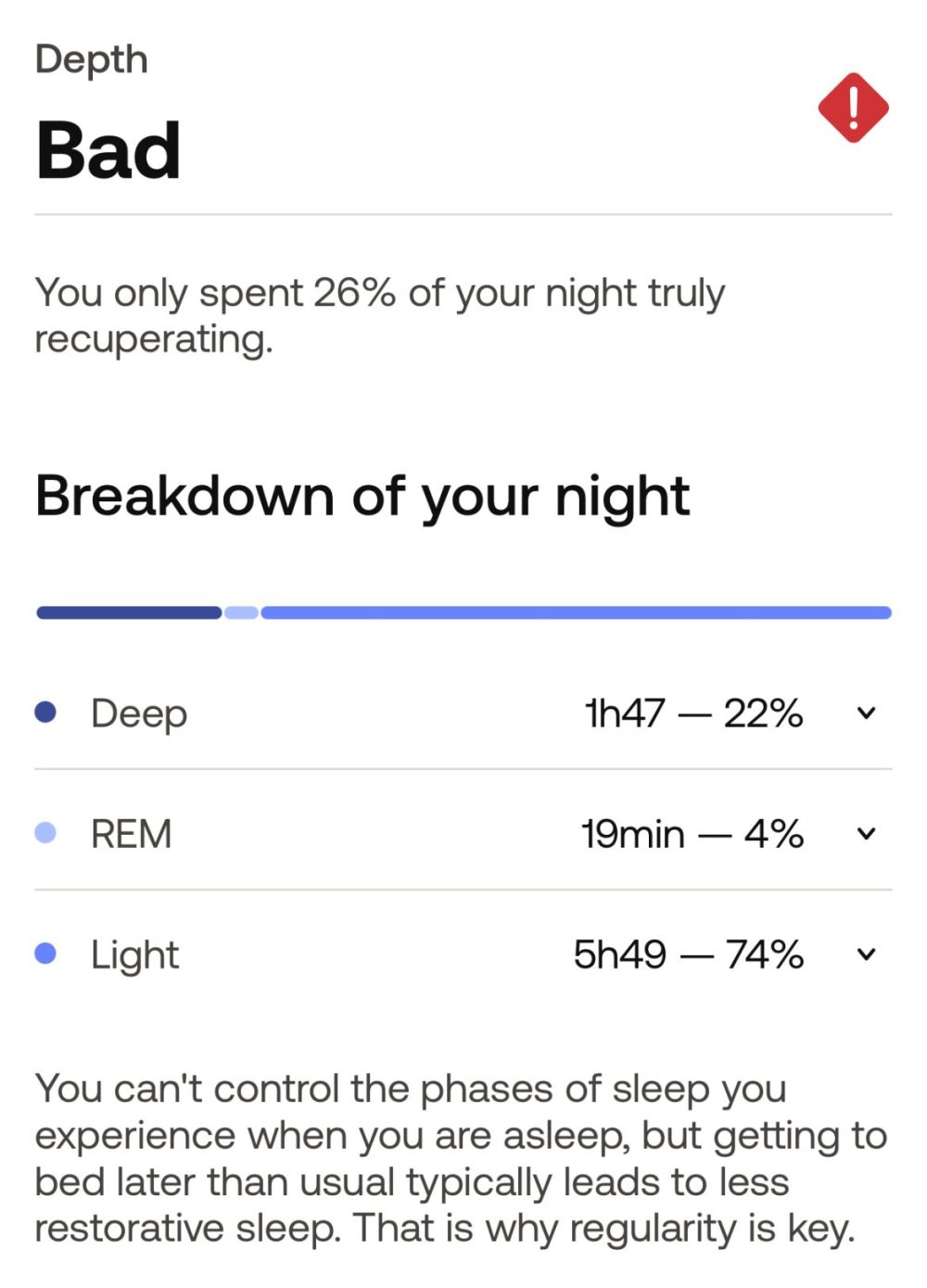
Overall, a satisfactory night, although deep sleep duration was limited (1 hour and 47 minutes out of nearly 8 hours total). Pre-test anticipation may have contributed, along with a slightly longer sleep latency than usual.
For comparison, the Huawei Band 8, worn concurrently, reported the following:

The Huawei Band 8 generally provides more generous assessments, indicating longer sleep duration and significantly more deep sleep. Experience suggests that the Band 8 often yields higher sleep scores; in this instance, the sleep was classified as so light that it was recorded as a “nap”.
Which device offers a more accurate representation? A definitive answer requires professional-grade equipment. The Withings Sleep Analyzer holds medical approval, while the Huawei Band does not. Subjectively, the Withings data appeared to align more closely with the perceived level of restfulness experienced after the night in question.
It’s essential to recognize that different devices employ varying assessment criteria, and relying solely on a single metric can be misleading. A night that felt restorative can seem inadequate based on unfavorable numerical data. While tracking and documenting sleep patterns can be beneficial for some, measurement results can also introduce stress. An excessive focus on data might lead to anxiety surrounding sleep quality and quantity, potentially exacerbating sleep disturbances. Sleep patterns should be evaluated as trends over extended periods, rather than judged based on isolated nights.
Sleep Apnea Measurement Concerns
What about sleep apnea, characterized by breathing pauses during sleep, which increases the risk of cardiovascular disease? To assess this, a nurse specializing in sleep treatment provided access to a CPAP (Continuous Positive Airway Pressure) mask for a one-night test. CPAP masks deliver continuous airflow through the nose and/or mouth, minimizing sleep apneas. The device also measures and reports on these events through a dedicated app.
The Withings Sleep Analyzer reported 16 apneas per hour during the test night, classifying the result as “moderate breathing pauses” and placing it in the “yellow” range. Note that some apneas are normal; intervention is typically considered when exceeding 15 interruptions per hour.
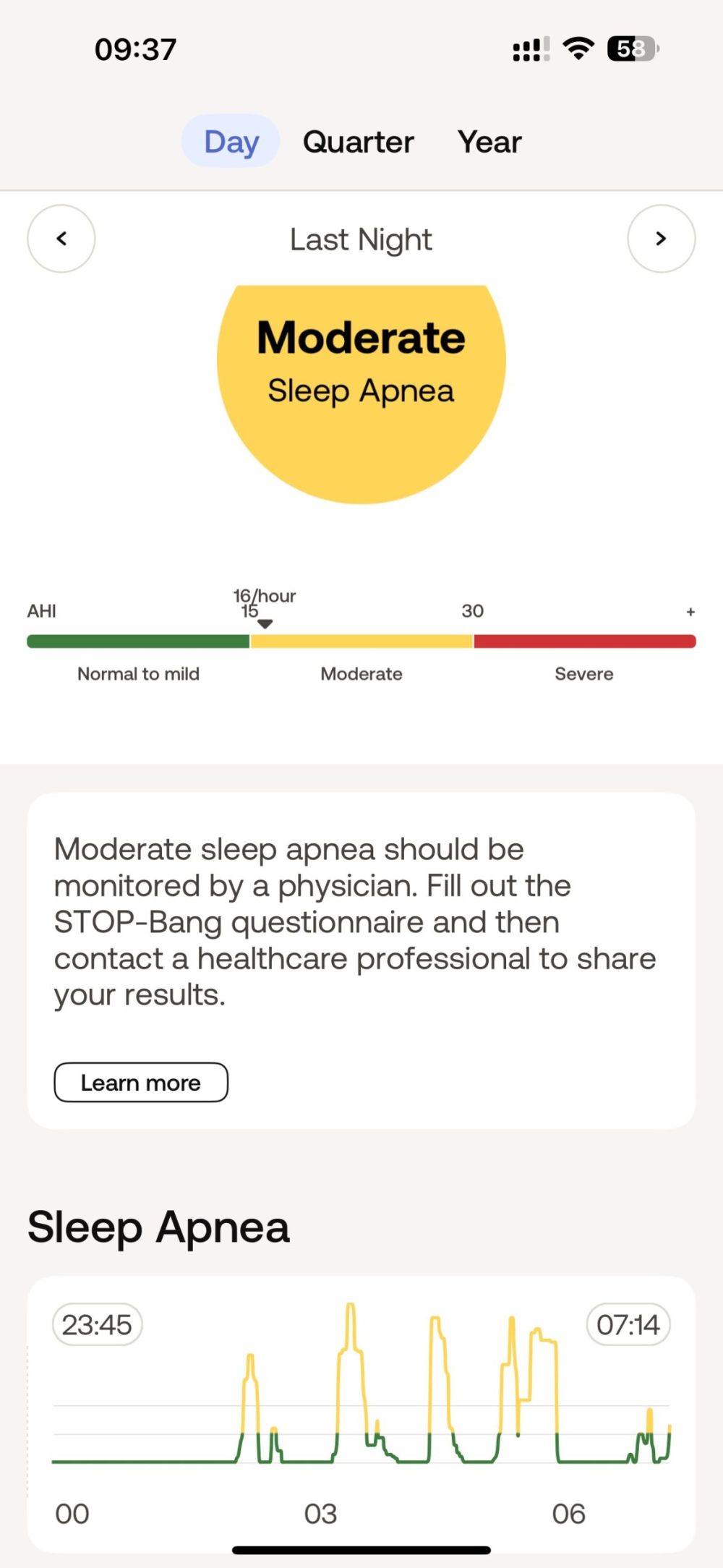
However, the test was conducted while using a CPAP mask, a medically calibrated and approved device designed specifically to minimize apneas. The Resmed CPAP machine reported 3.4 events (interruptions) per hour – less than a quarter of the Withings measurement:
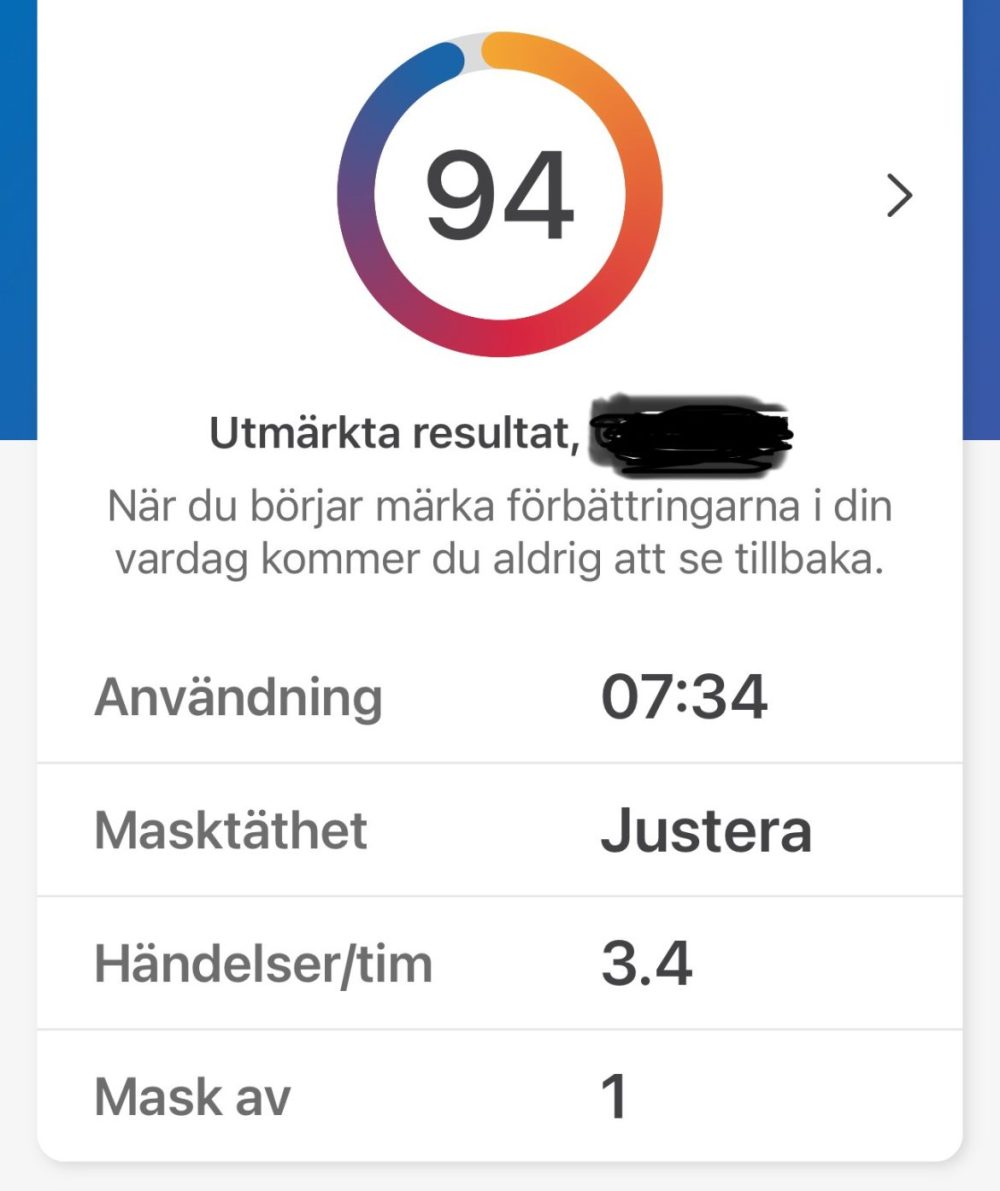
In this instance, the Resmed medical equipment is considered the authoritative source. It is professionally used in healthcare, and its core function is to minimize apneas. Therefore, reporting a worse result than would be expected without treatment is illogical. The Sleep Analyzer’s sleep apnea measurements should be viewed with considerable skepticism. Individuals experiencing persistent fatigue despite adequate sleep duration (7-8 hours) should consult healthcare professionals for a thorough evaluation for potential sleep apnea.
CPAP use technically precludes snoring; in the test described, the Sleep Analyzer correctly reported no snoring events.
Withings Sleep Analyzer Review Summary
The Withings Sleep Analyzer offers a more streamlined and comfortable sleep tracking experience than smartwatches or wrist-worn activity trackers. The core sleep measurements appear reasonably accurate, even when positioned beneath a spring mattress, and sensitivity can be adjusted for single sleepers. However, the sleep apnea detection feature proved unreliable and should be disregarded. At its current price point of approximately 1,600 SEK, the Sleep Analyzer represents a worthwhile investment for individuals seeking to monitor sleep patterns over time and obtain relatively reliable data. We continue to recommend this health-tech manufacturer’s products.
Withings provided review units for this evaluation. The provision of review materials does not influence our editorial independence. Our reviews are conducted independently, with a focus on providing unbiased information to our readers and consumers.
